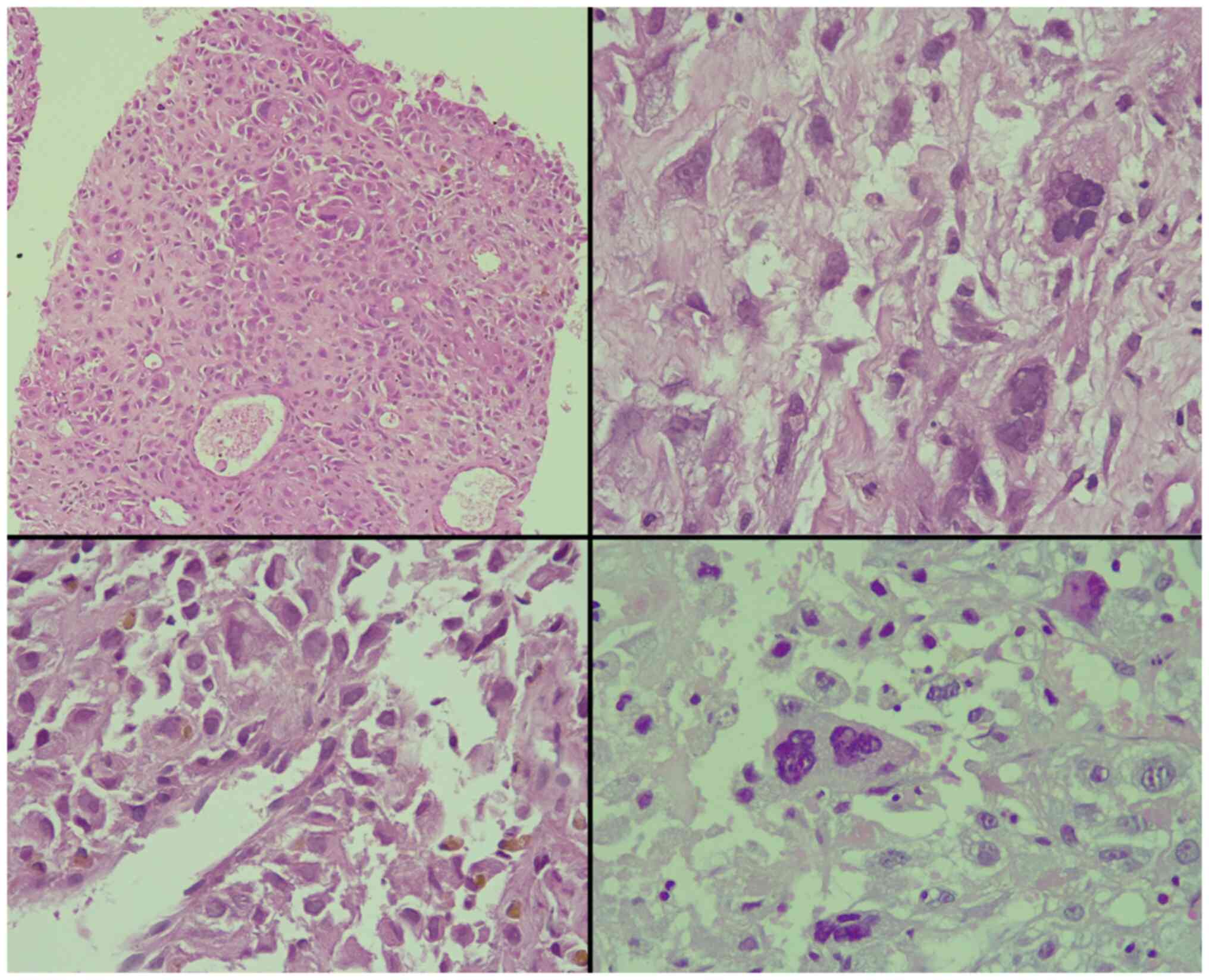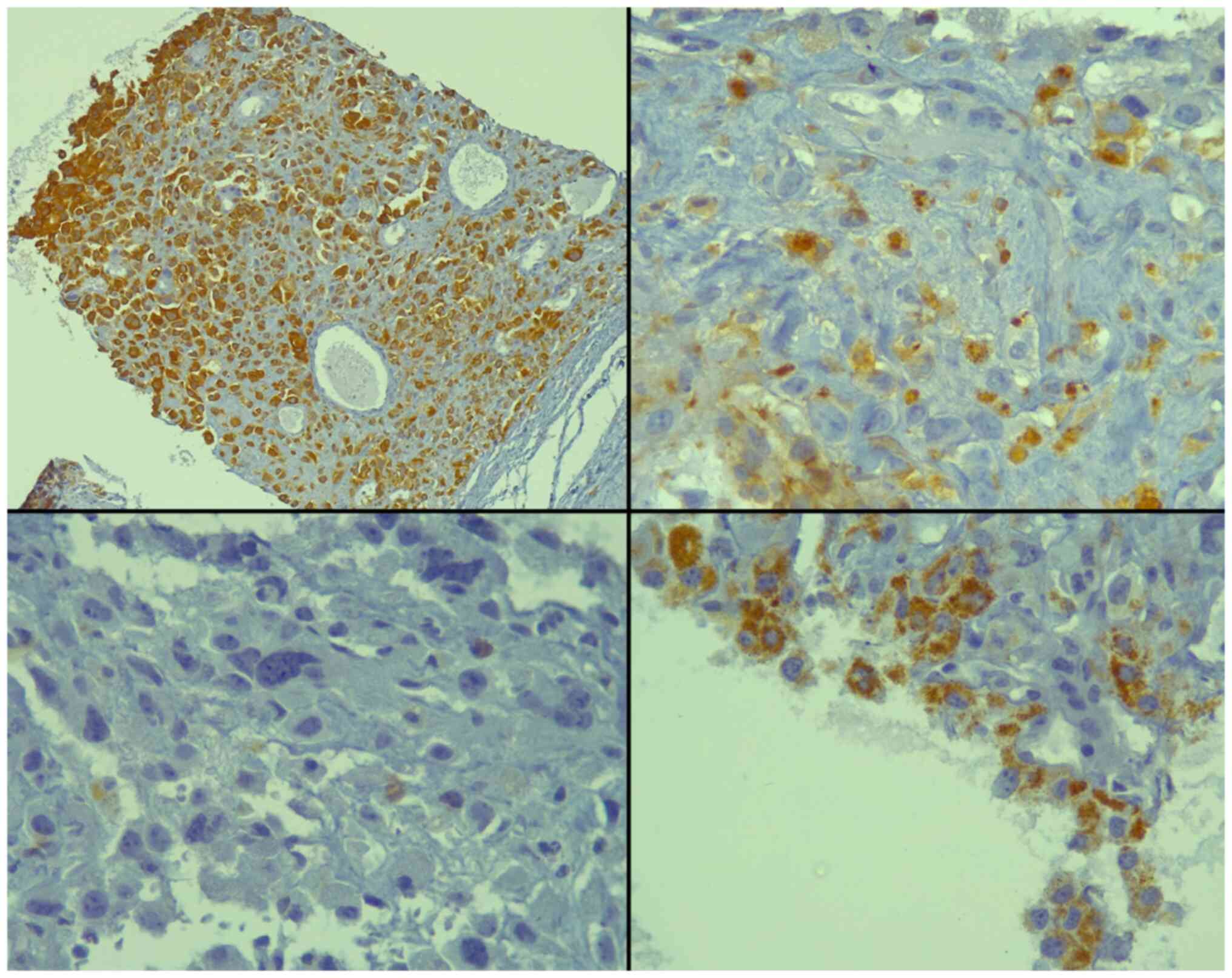Pleomorphic giant cell carcinoma of the prostate: A case report and mini‑review of the literature
- Authors:
- Published online on: November 10, 2023 https://doi.org/10.3892/mi.2023.120
- Article Number: 60
-
Copyright : © Fakhralddin et al. This is an open access article distributed under the terms of Creative Commons Attribution License [CC BY 4.0].
Metrics:
Total
Views: 0 (Spandidos Publications: | PMC Statistics:
)
Total PDF Downloads: 0 (Spandidos Publications: | PMC Statistics:
)
Abstract
Pleomorphic giant cell carcinoma (PGCC) is an exceptionally uncommon form of prostate adenocarcinoma. It consists of unusually large and irregular cells with varied nuclei. The present study describes a rare case of prostatic PGCC. A 65‑year‑old male patient presented to the urology clinic with severe dysuria, nocturia, and frequent, urgent, and difficult urination for a period of 3 months. Pelvic magnetic resonance imaging revealed a large pelvic mass. A prostate biopsy was performed, and immunohistochemical analysis revealed positivity for the pan‑epithelial markers, AE1/AE3, alpha‑methyl acyl‑CoA racemase, and focally for sphingolipid activator protein‑2. While waiting for his pathology report, the patient's condition deteriorated, and he was diagnosed with intestinal obstruction. The patient underwent laparotomy and end colostomy. Later, he developed severe sepsis and wound dehiscence. After 2 weeks, the patient succumbed due to multiorgan failure. Prostatic PGCC cases are frequently associated with previous chemo‑, hormone, or radiation therapy. Prior to the diagnosis of PGCC, it is critical to rule out urothelial carcinoma. Early recognition of this rare condition can lead to more effective therapy. Prostatic PGCC is extremely rare. Immunohistochemistry for prostatic markers, such as prostate‑specific membrane antigen, prostate‑specific antigen, NK3 homeobox 1 and androgen receptor, can be used to confirm its origin.











